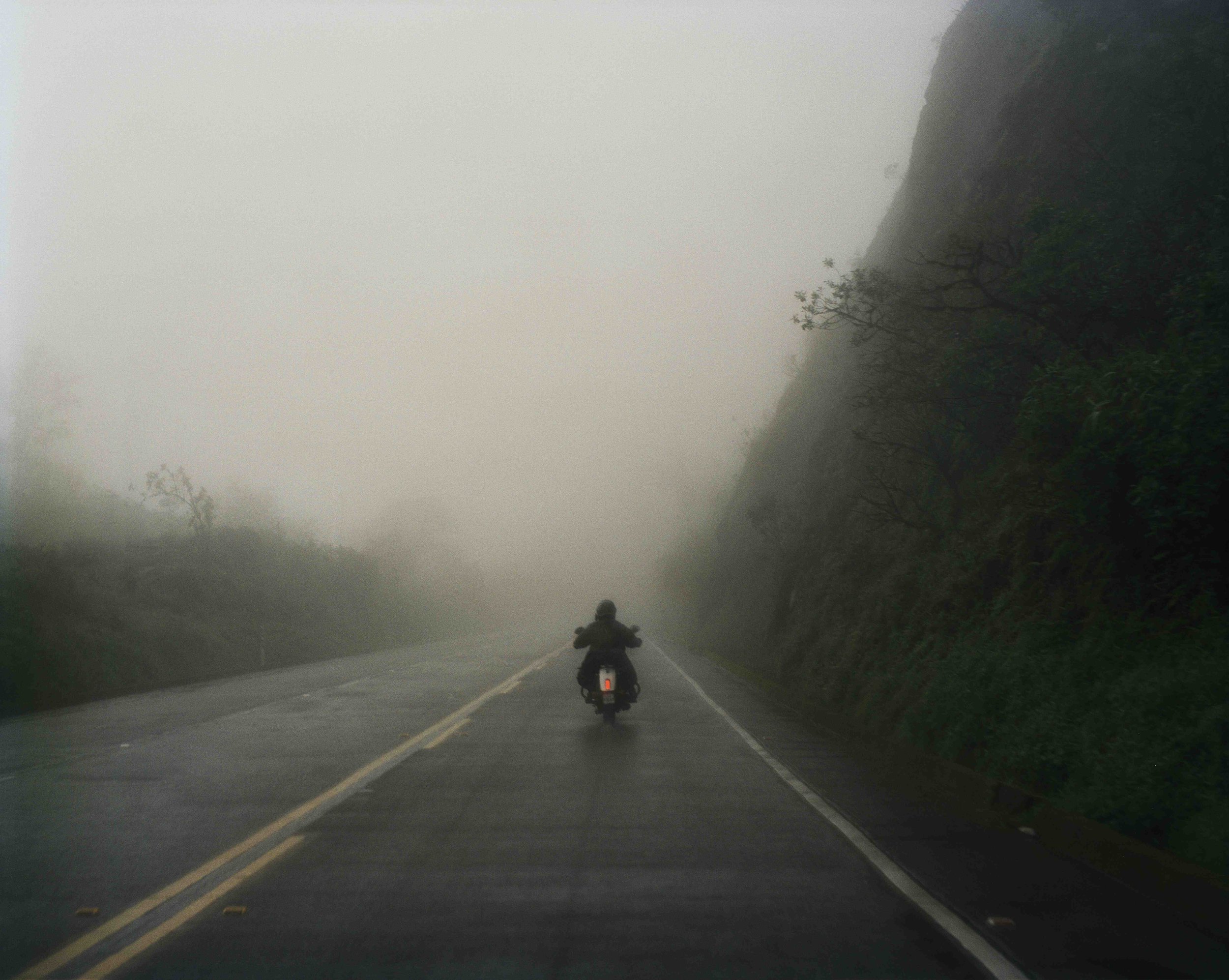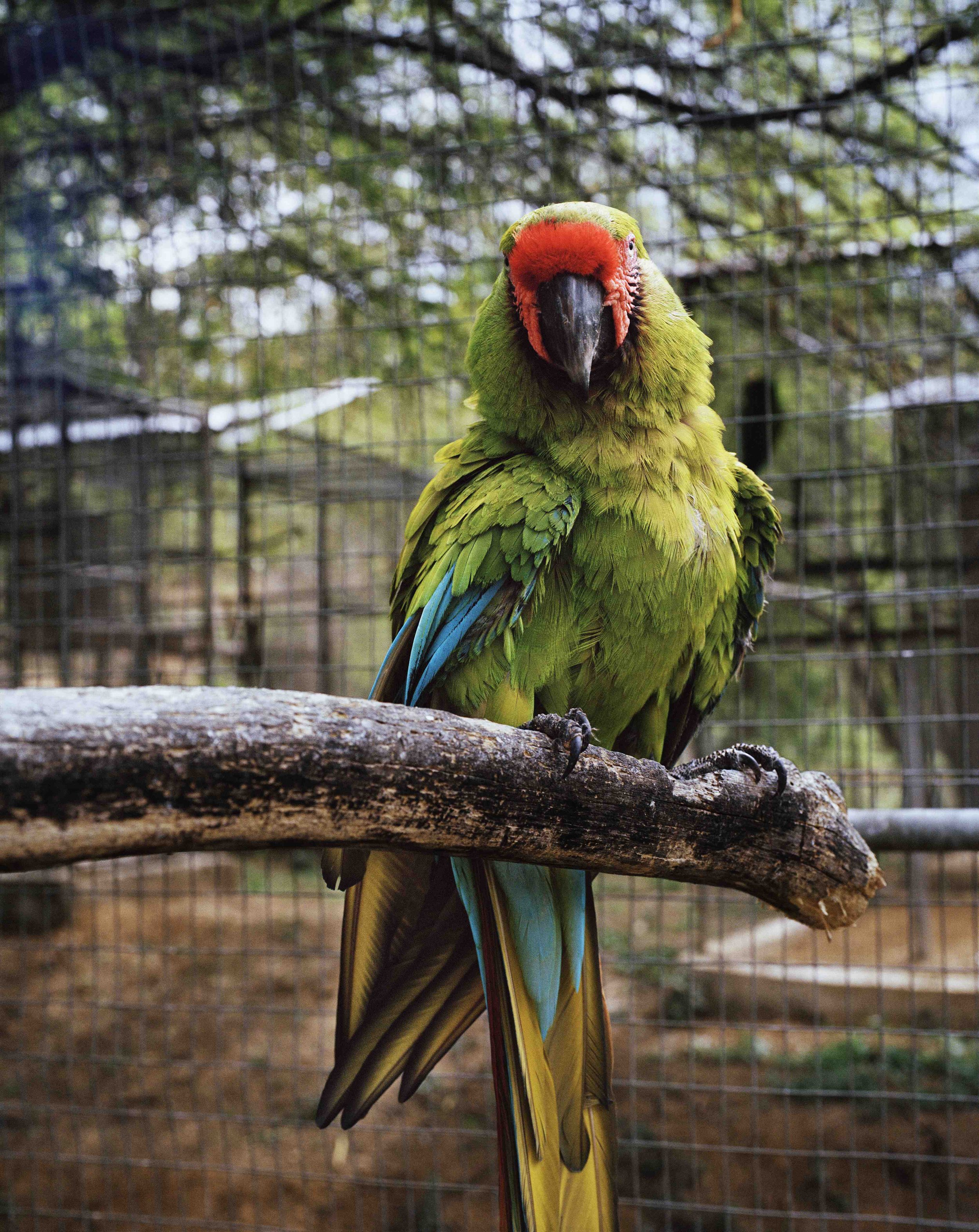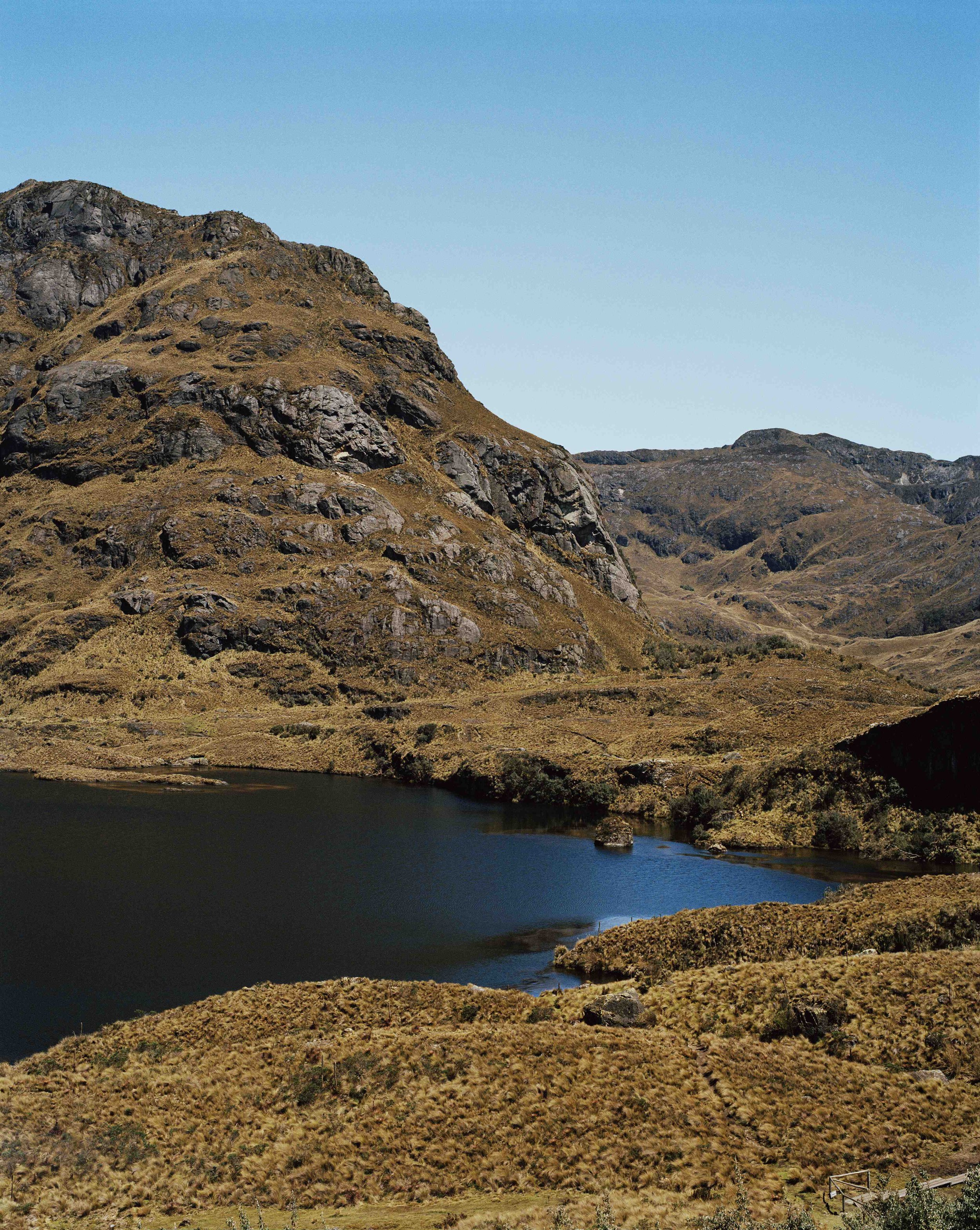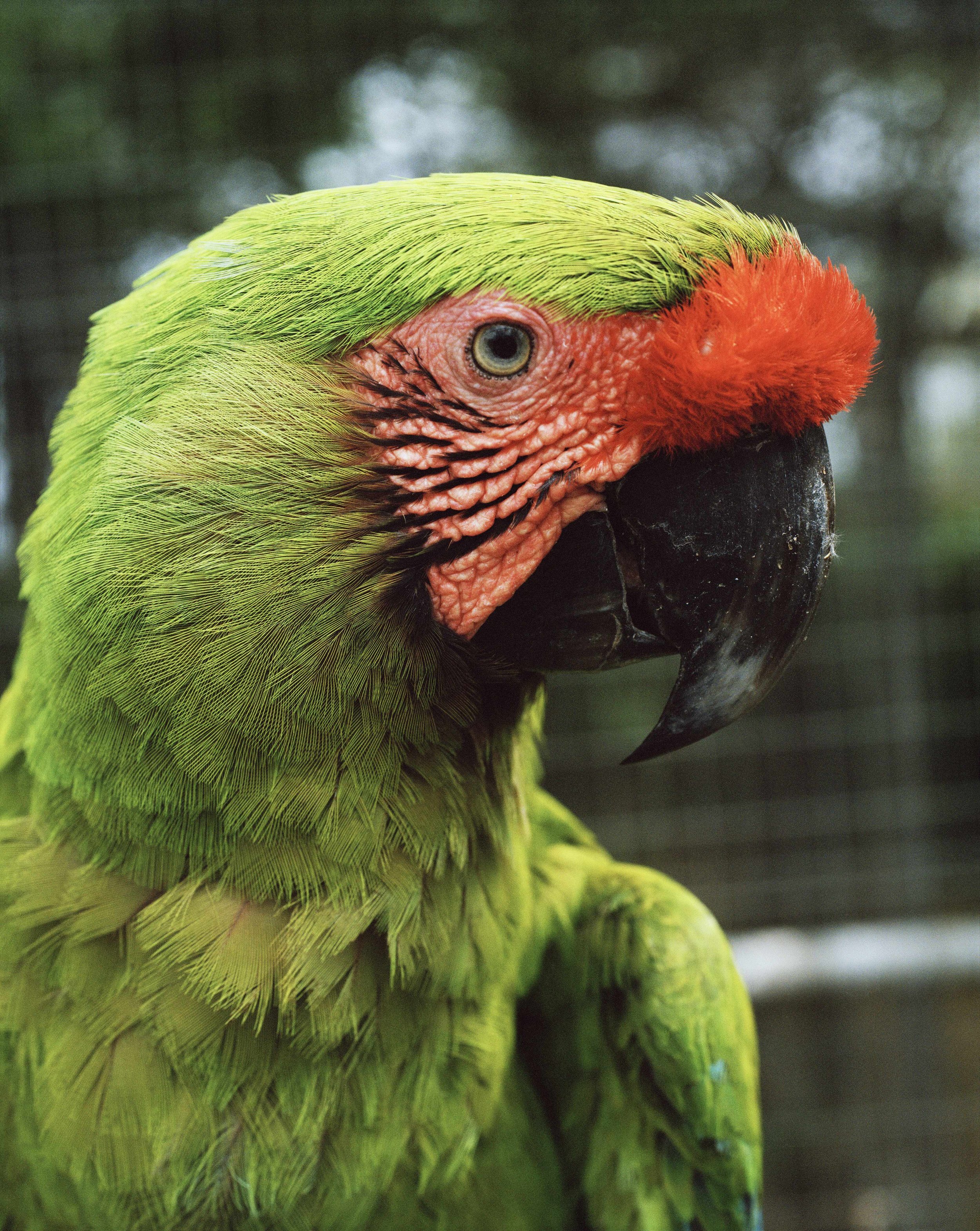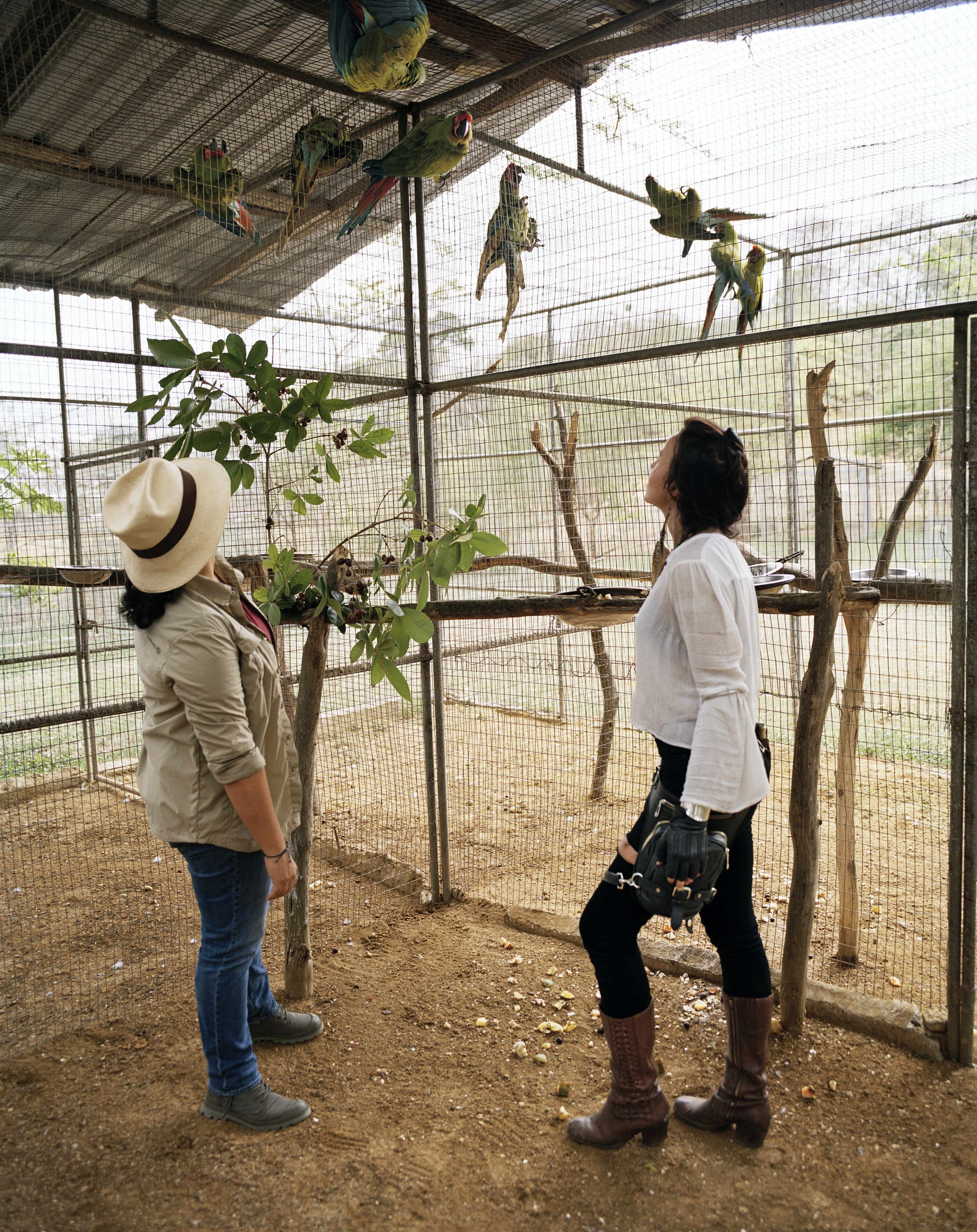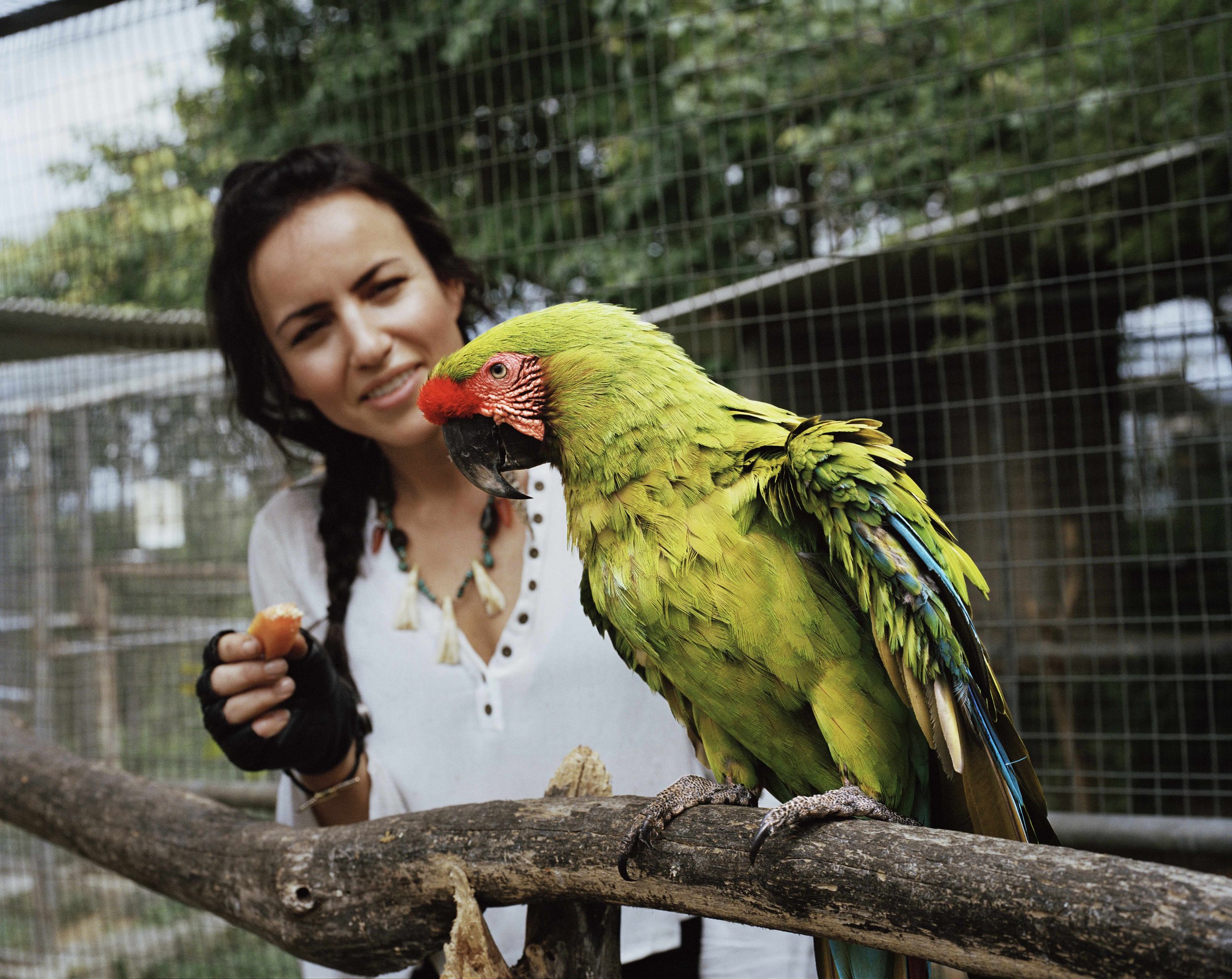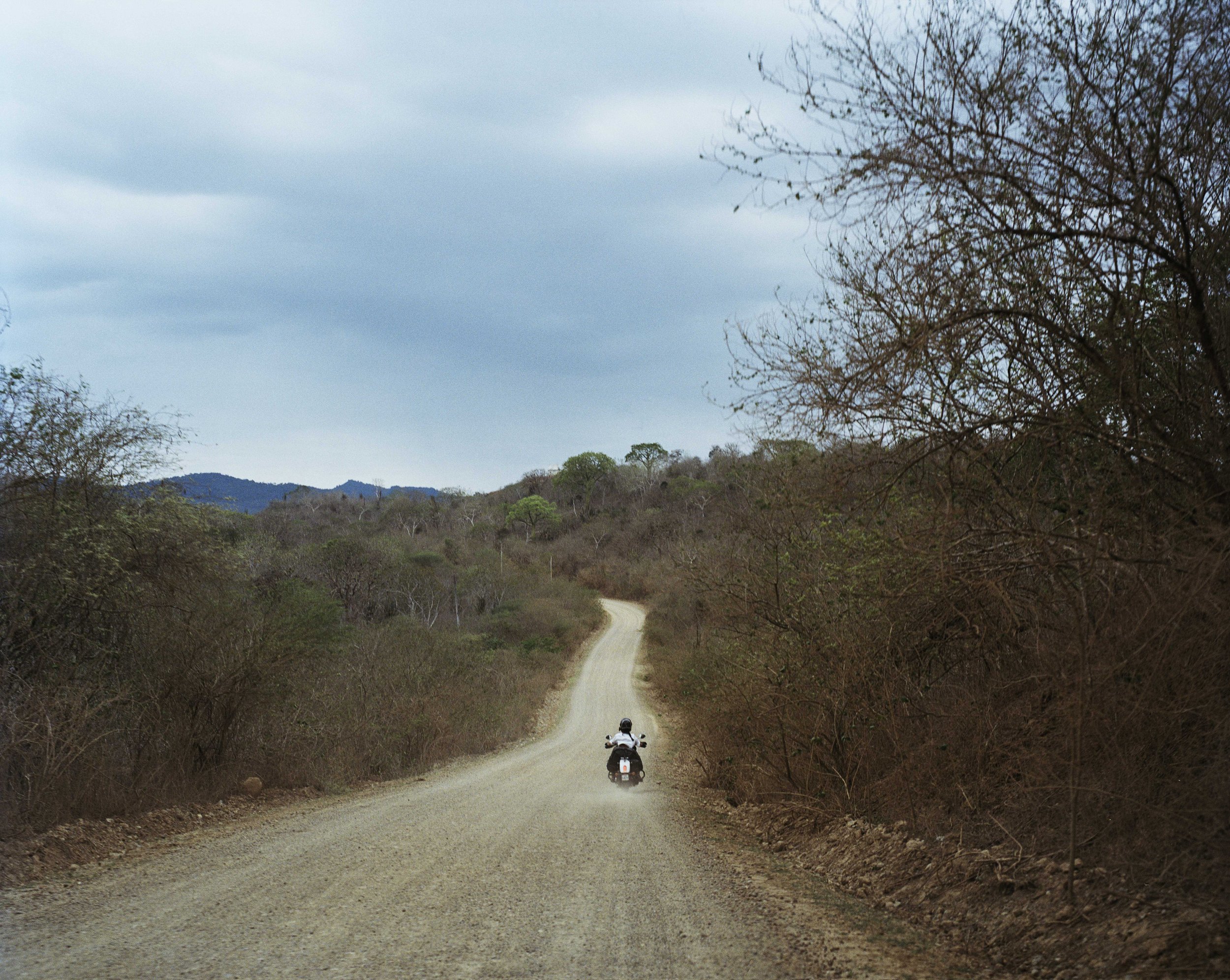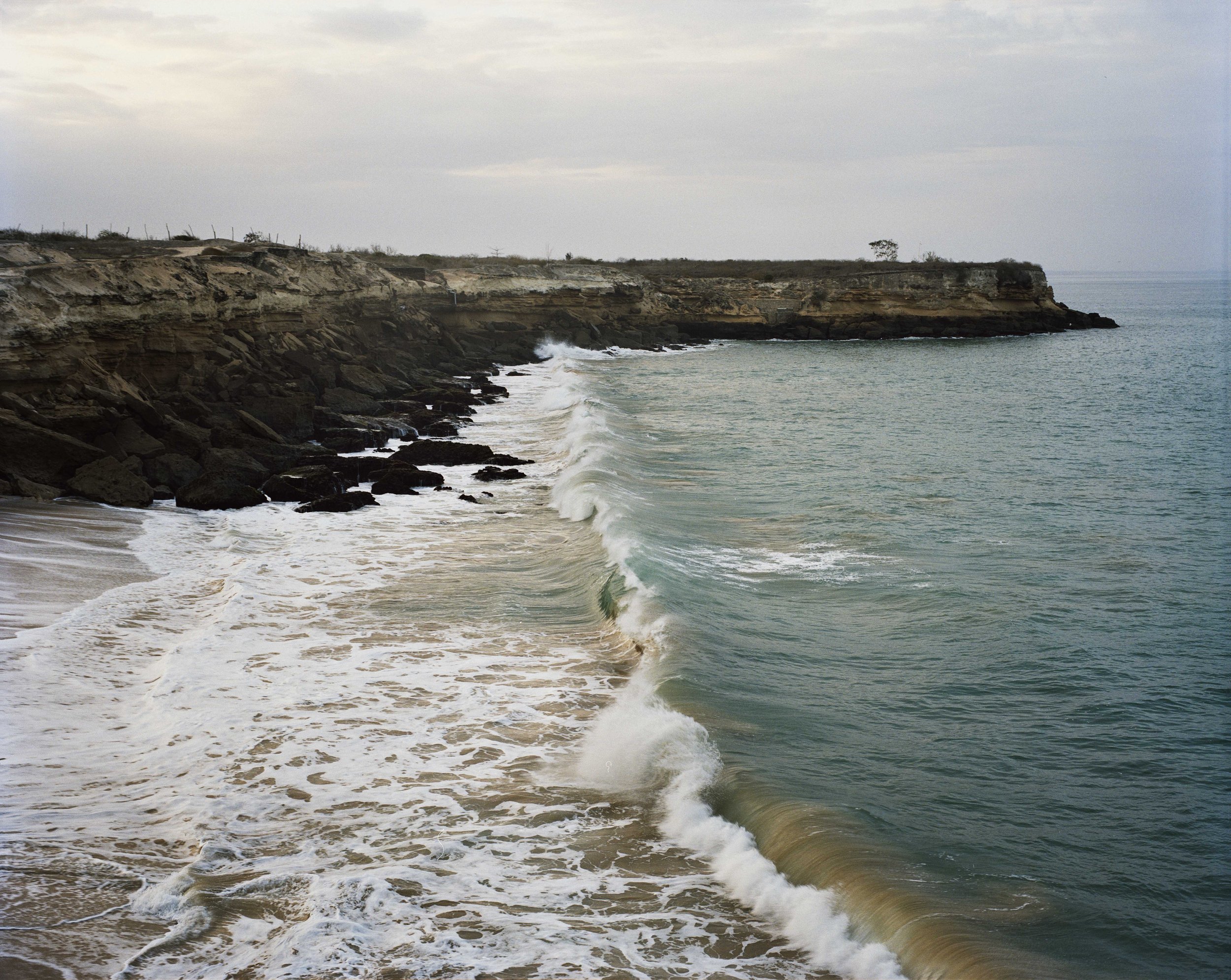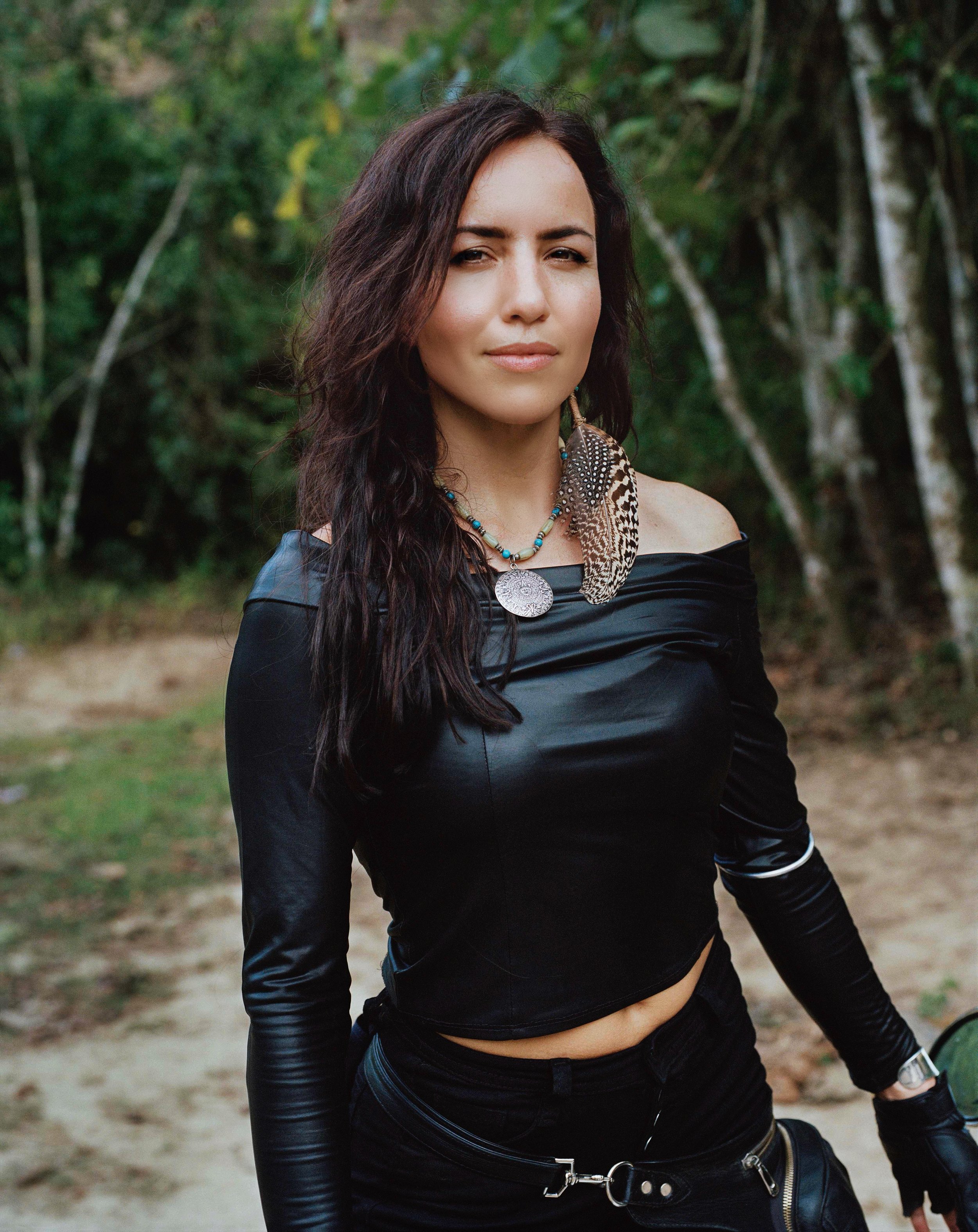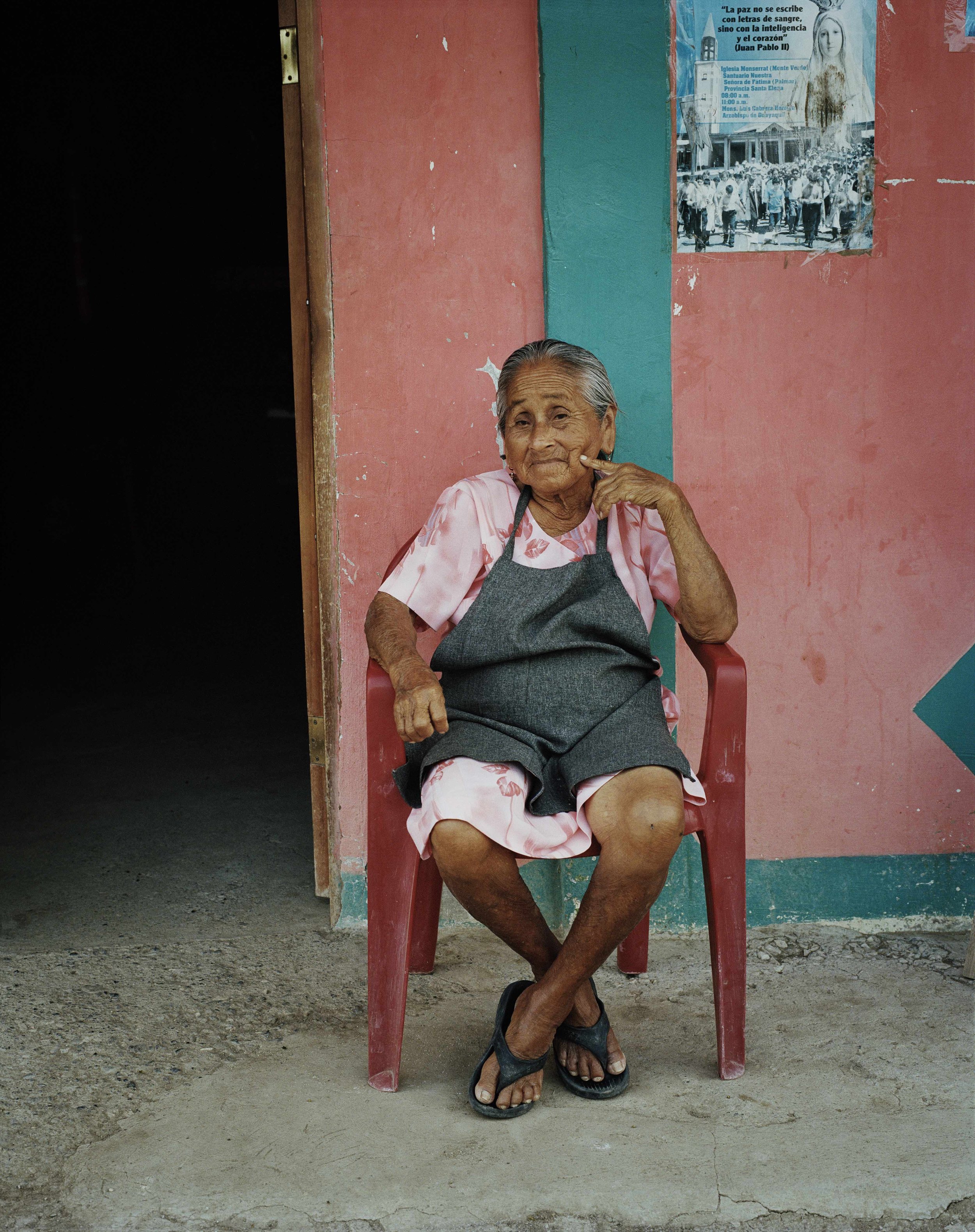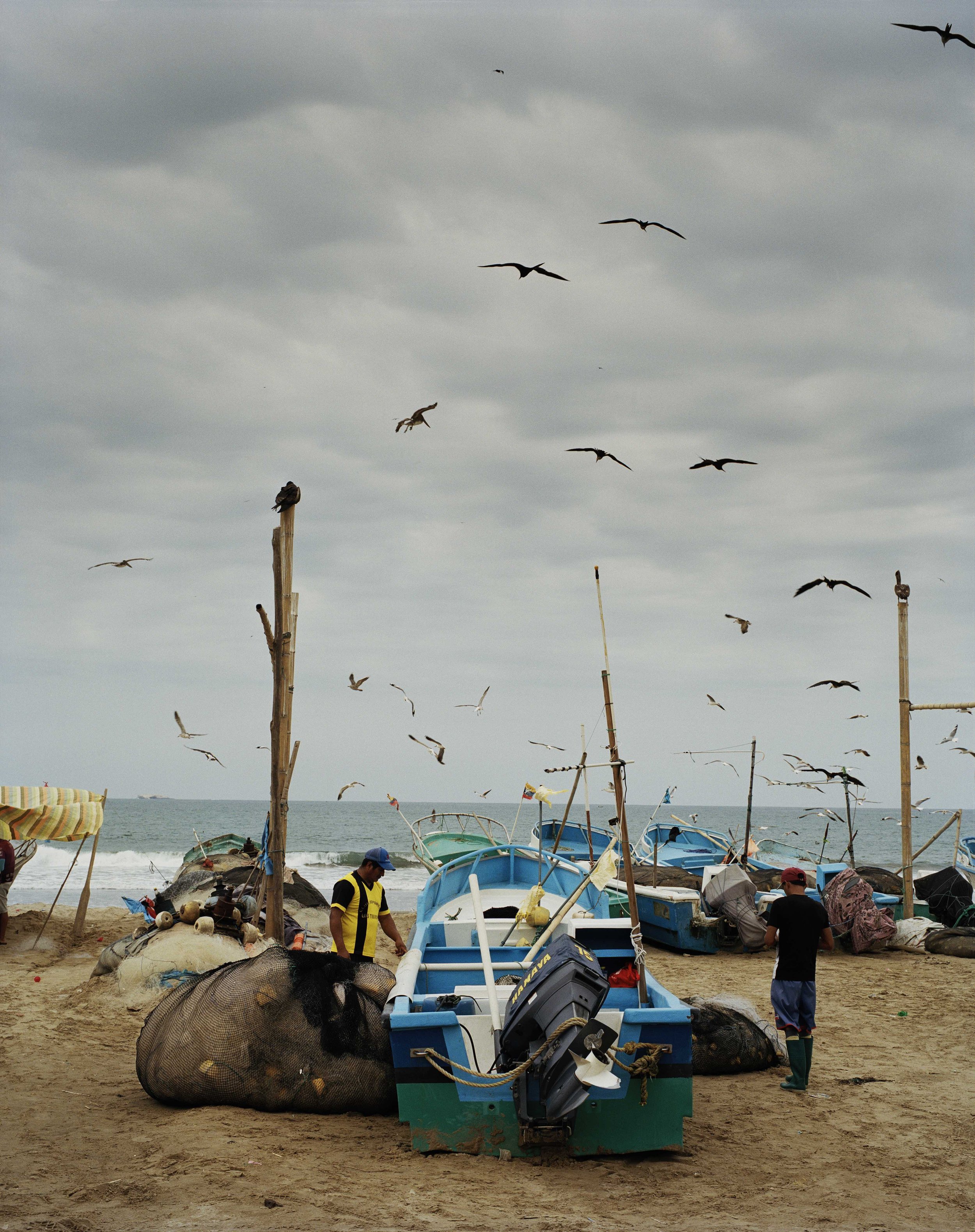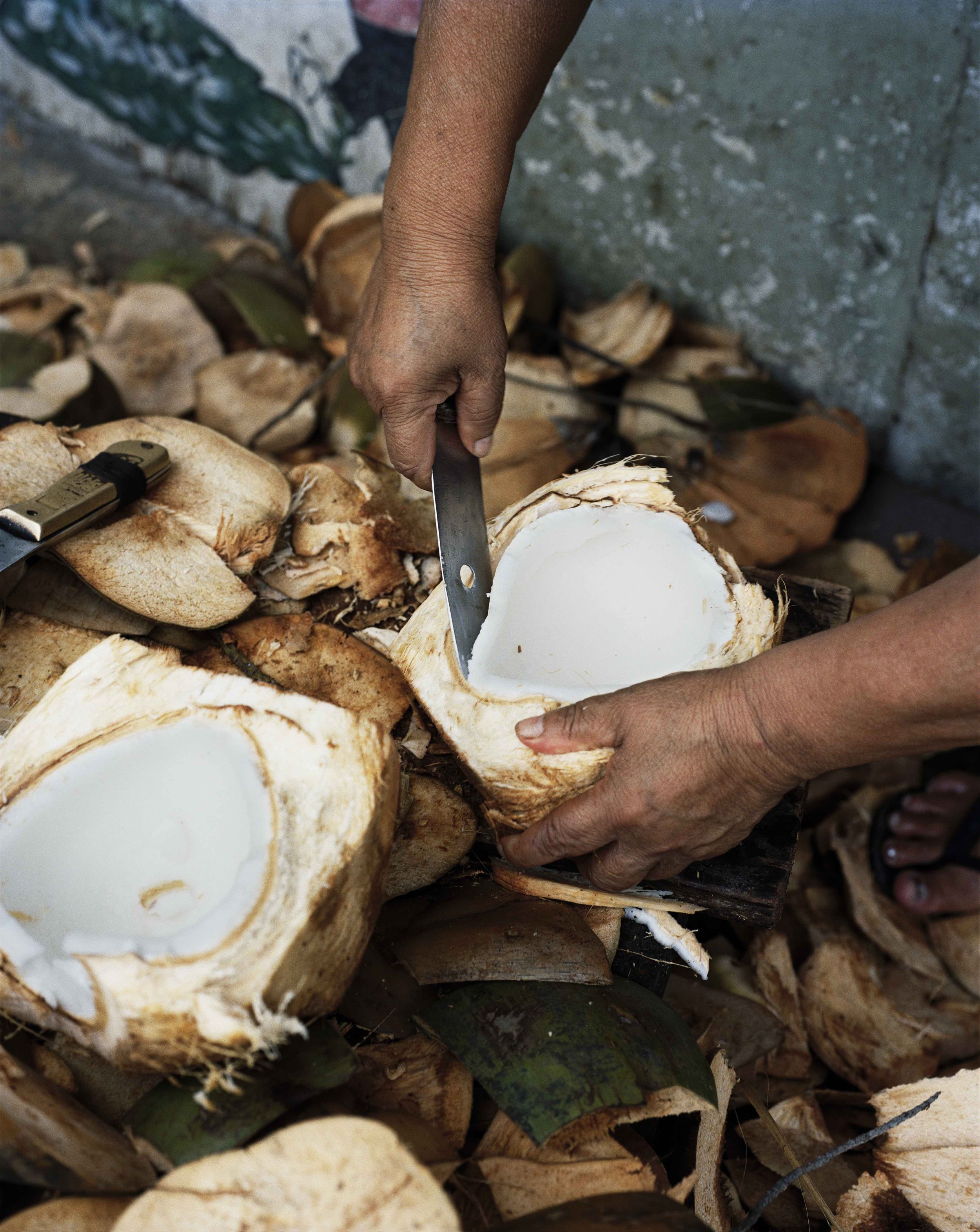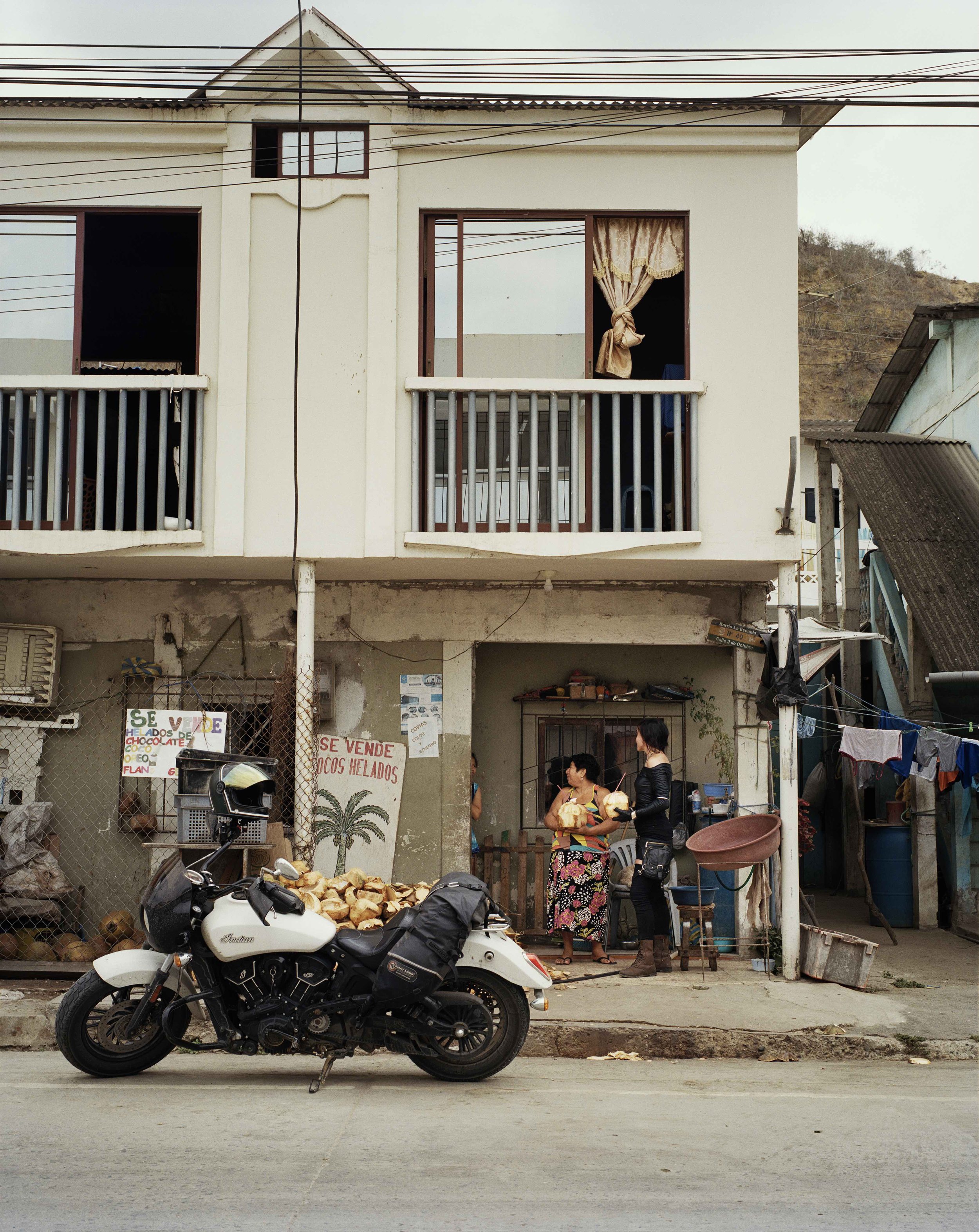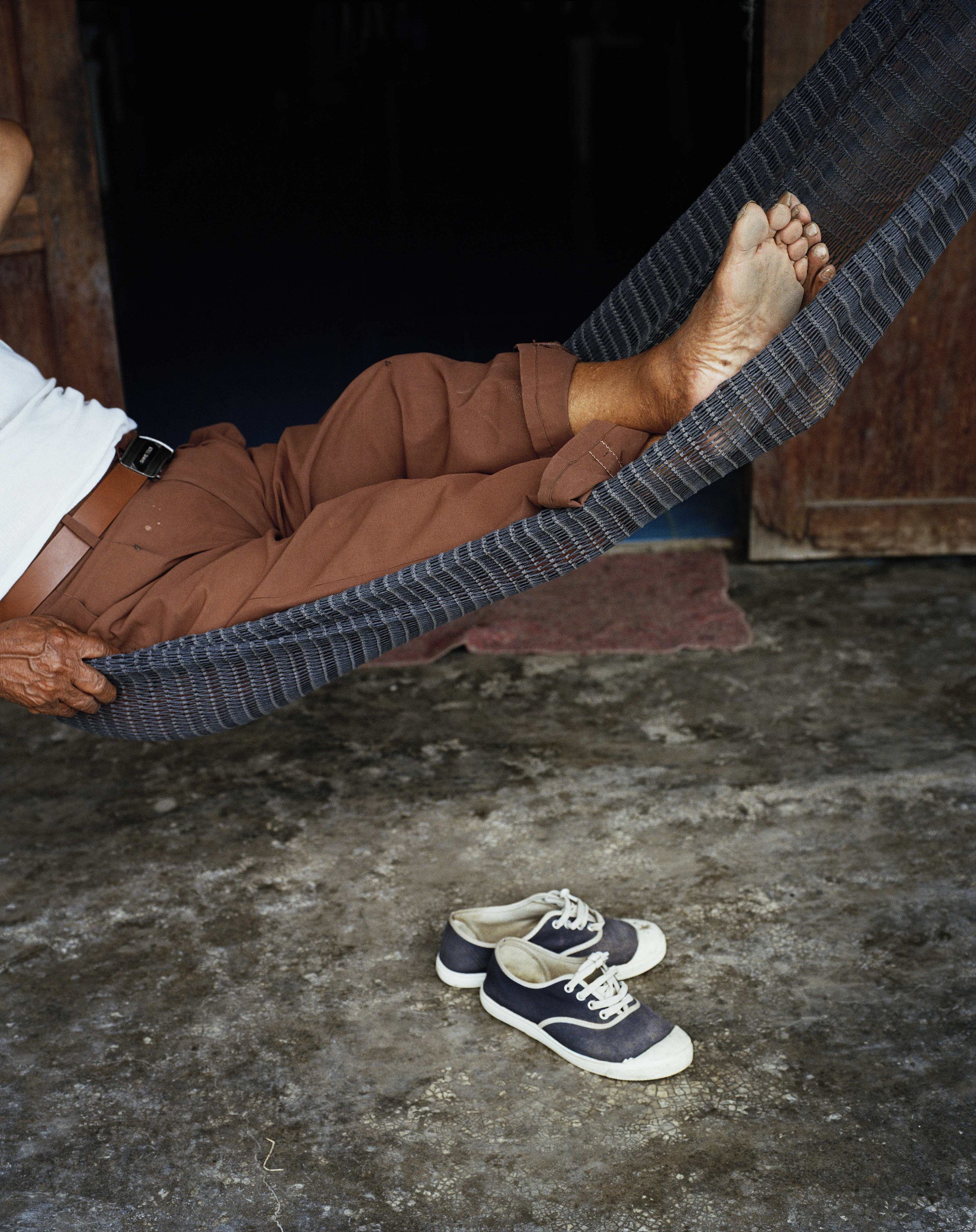Easyriders
THE ROAD IS HOME
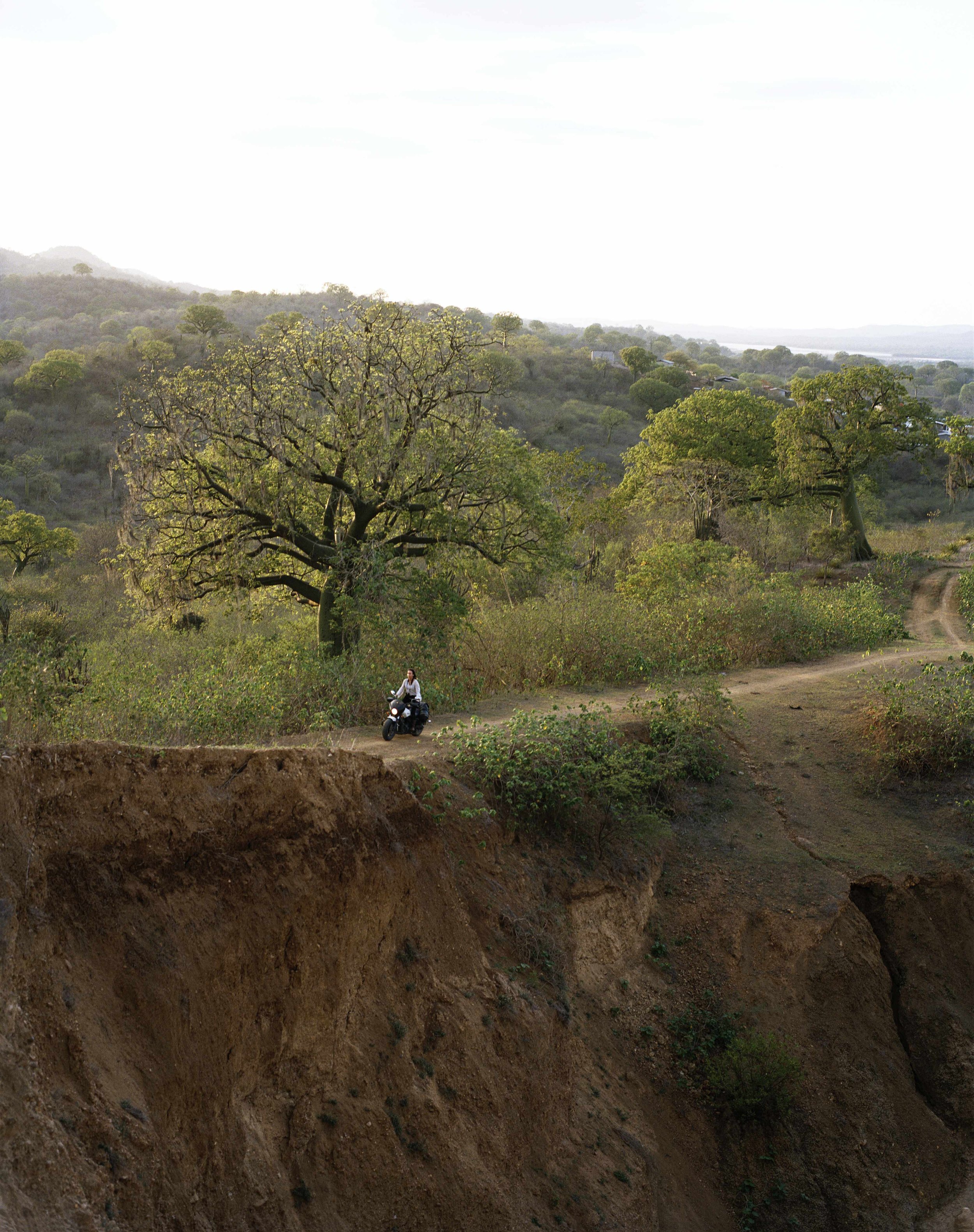

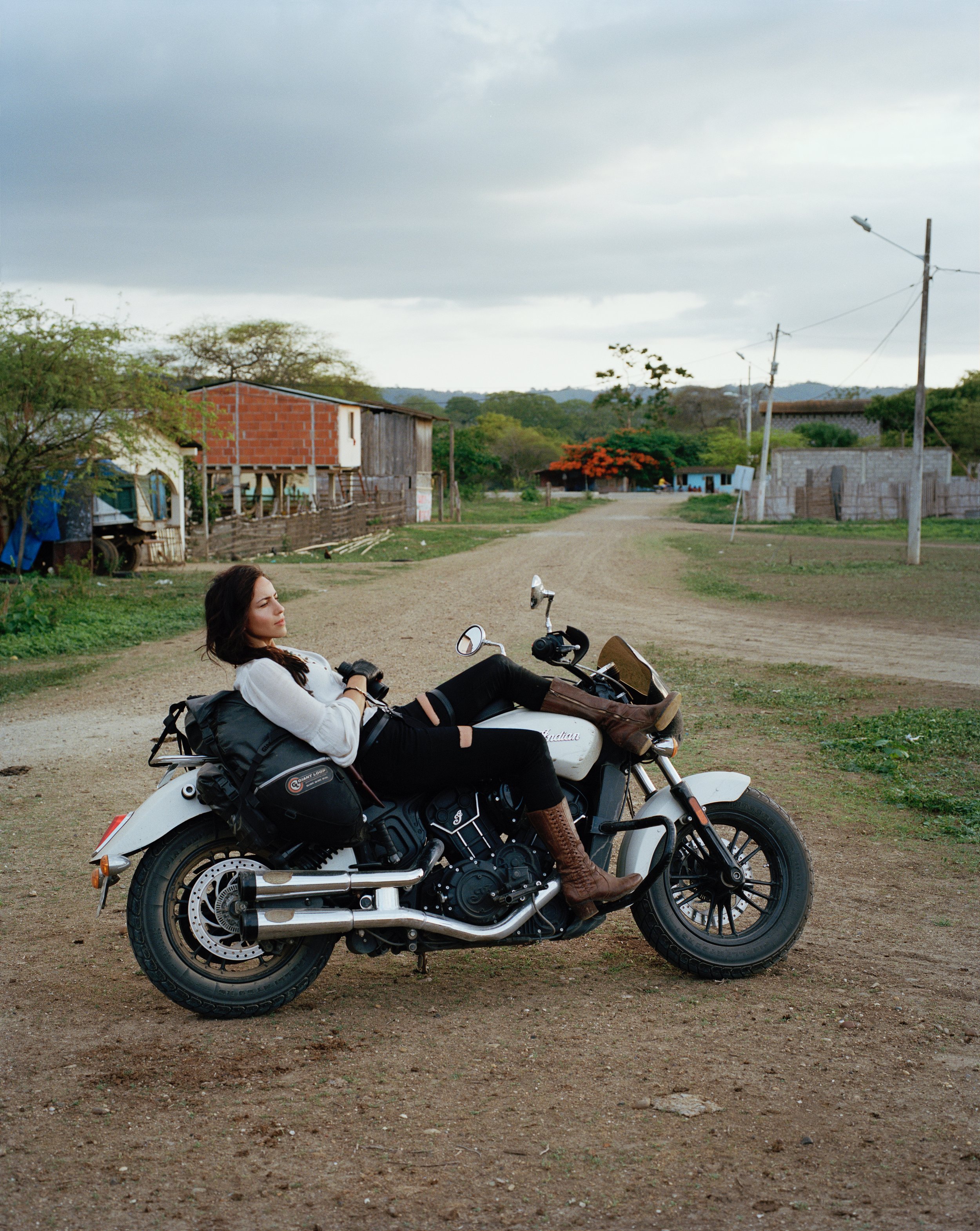
Darkness comes quickly in the forest.
The bike rumbles down the dirt trail, leading into the thick of it. My Indian Scout Sixty purrs through the many streams crossing the road, growling beyond small clusters of humble farm houses while heading deeper into what appears to be a Jurassic world.
Tall tree ferns tower overhead, with the occasional blue morpho butterfly flashing its vibrant, siren-like iridescent blue with each flap of its wings. The road is rutted and worn. My fat tires roll down each steep, rocky ravine.
This is jaguar territory. The last ones remaining in coastal Ecuador; a critically endangered jaguar subspecies (Panthera onca centralis) living on the west side of the formidable and isolating Andes mountain range. My bike was dubbed “Onca” after I left Santiago, Chile, more than 16,000 kilometers (10,000 miles) ago, in reverence to the jaguar, Panthera onca. She, Onca, and I, feel most at home in the lands where the jaguar has the freedom to roam. It is freedom above all which we value. The freedom to be wild, to live as nature intended, to be respected for what you are, just how the billions of years of slow, cumbersome evolution has shaped you.
This isn’t exactly the type of terrain the bike was made for, per say, and many have demanded that I’m on the “wrong bike.” However, any bike can be an adventure bike if you take it on adventures—and I suppose I’m out to prove that. Besides, I love a good challenge... especially one as beautiful as this. Granted, before leaving Santiago, I made a few changes to make the bike a bit more off-road capable with the help of custom parts from Roland Sands Design, the same ones they use for their Scout Sixty Super Hooligans race bikes.
Mid-controls were essential, not only for better control of the bike but also to allow me to stand up and take the weight off the seat on rough roads. With Progressive suspension, bar risers, and some wind deflectors from MemphisShades, I was ready to venture north, crossing the Atacama desert, ascending into the high Andes, traversing the harsh Altiplano, and finally descending down into the humid, lush Amazon Basin.
Across these immersive landscapes, traveling alone, it is not loneliness you find, but lessons to learn, sights to see, and moments to feel. There are the songs of birds to hear, sharing their ancient melodies. There are mysteries—biological and anthropological—which only ravel tighter when you touch them. And as always, there are the calls of the wild, drumming in your chest.
Riding further into the tropical forest, I can see that something is amiss. Where are the birds? Where are the colorful parrots and macaws the locals say they used to see, before the sounds of quarry explosions filled the air? Have they all been locked away into cages, stolen from the wild to live as pets? Have all of their carob trees, which they roost in communally, night after night, been reduced to charcoal?
Some, such as the Great Green Macaw, once the largest parrots in their natural range, have already become extinct from this area. Such an emblematic character and symbol of this region lost from these forests is a tragedy. As usual, the answers I seek are beyond the frontier of “progress,” away from the development of our civilization.
As my vessel for exploration, I have a deep love affair with my bike and even the gear that goes along with it. My helmet makes a certain noise when I pick it up, from squeezing the inner padding against the protective shell. The fuel pump whines moments before the powerful sound waves of the exhaust take over. Onca and I have been through so much together already. My faithful companion, there with me in the middle of nowhere, always feeling strong and steady even when I become fatigued.
Riding in the high elevation of the Andes mountains, the road curves around the alpine lakes and lichen covered rocks, steeply descending down into the lowland tropical forests. From above, the vegetation stretches out before me to the west for as far as I can see. Mist rises from the dense foliage and I am soon immersed in a cloud. Each curve brings me deeper into an expanse of trees.
Into the coastal mountain range we venture, Onca and I, the Cordillera de Chongón-Colonche, driven by a passion for the wild and the staggering diversity of life which exists within it. There’s a touch of restlessness in there as well, perhaps a vestige of my gypsy heritage or, let’s admit it, just plain madness.
These tropical mountains have experienced relatively little deforestation, the trees still stand as sentinels, strongholds for the natural world. Though the lowland environment is “tropical dry forest,” a critically endangered ecosystem within itself, higher up the mountain range consists of misty, lush vegetation. Indigenous territory which can never be sold, the government negotiated to pay locals an annual sum of money per hectare in exchange for conserving the land. However, this is a precarious agreement, as payment is slow or non-existent and some community members may have no choice but to turn to other measures of compensation for their forested land. This would be devastating, as the fire risk associated with forest conversion activities, such as those for agricultural purposes, is a serious threat to the entire area.
We’re in the midst of a race on this planet, not only one against resource extraction, but also a race against time and the changing of our global climate. If we want to protect what we have left, we must act quickly.
Across the peninsula, the Pacific breeze whispers a gentle pull towards home to a new member of our planet. Hatched in captivity, she is featherless and awkward, but will soon grow into the Great Green Macaw she is. Her destiny is the wild.
Her kind is a critically endangered subspecies (Ara ambiguus guayaquilensis), which became extinct from this area more than 50 years ago. These Great Green Macaws are now being bred in captivity at the Jambeli rescue center in order to reestablish a population in their native habitat. The plan is to repopulate this enigmatic species back into the indigenous territory, so that these huge, vibrant, flying feathered dinosaurs may take to the skies once again.
Great Green Macaws live in family groups of around five or six individuals. Once they find a mate, they form strong, lifelong bonds. Feeding on fruits and seeds, they are tied to the forests as essential seed dispersers. The evolving of these relationships, between mating macaws, and that of the fruiting trees, macaw food preference, and subsequent diversity of the forest has taken eons.
There are those who fight for the planet, those who stand up for the wild and all the creatures who live within it. These individuals and groups dedicate their lives to this cause, such as the Jocotoco Foundation. Not only does Jocotoco recognize the biological importance of these forests, but they also understand that the indigenous community of this area needs income in exchange for conserving the land beyond what they were promised from the government. Jocotoco therefore stepped in and is now leasing the land from the community, in addition to the development of alternative income sources, such as from the existing carob trees so that they will be left standing.
Riding out to Jocotoco’s new ecological reserve, now known as Las Balsas, we arrive at the massive pre-release cage located deep within the forest. It is there the macaws will reach maturity and later be set free. Some will be equipped with GPS trackers so that more can be known about their lives and their status in the reserve. With this information, the Jocotoco Foundation will be able to better protect them for years to come.
Within the small community of Las Balsas, a project to educate the school children on the importance of protecting the Great Green Macaw is aimed to diminish the illegal trade for them as pets. The children become guardians of the Macaws, as a sense of pride is cultivated when they understand the value and importance these birds hold for their region.
My own restless, gypsy heart soars to know that these large, sentient birds are going back to a land that is truly theirs, to spread their wings and fly freely just as nature has crafted them to do over all this time. Birds are the direct descendants of dinosaurs, and this Jurassic-looking world is their home. They belong here.
Onca and I, well, we belong wherever the wild is respected. She’ll continue carrying me north, as I document wildlife protection projects, create and implement environmental education curricula for children, and offer support to those who stand firmly on the frontlines of conservation.
Once again my helmet makes that same familiar sound as I pick it up, my jacket embraces me, my fuel pump whines and my Onca roars to life. I sense the drumming of the wild in my chest and in following it, the road is home.


